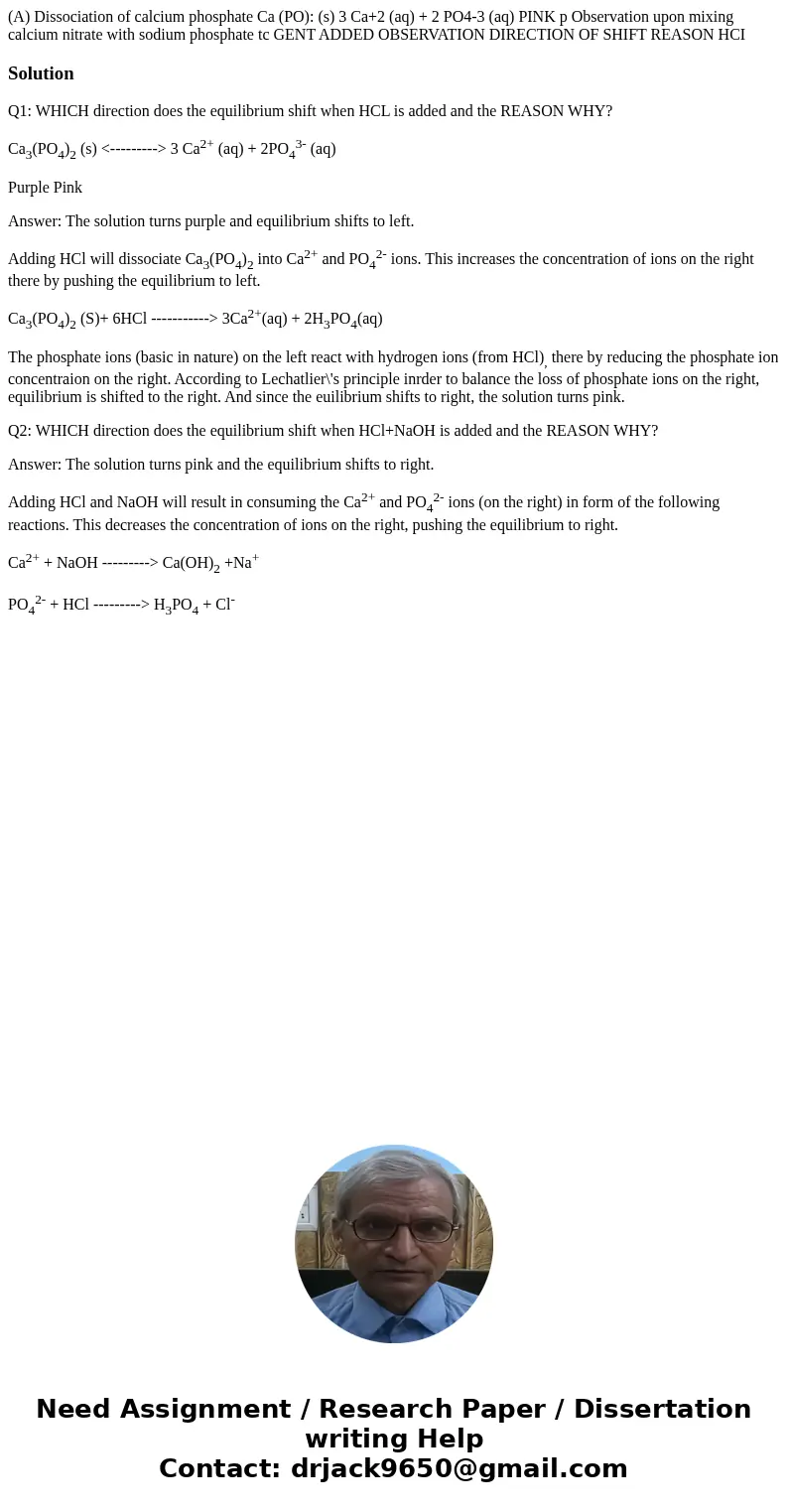A Dissociation of calcium phosphate Ca PO s 3 Ca2 aq 2 PO43
Solution
Q1: WHICH direction does the equilibrium shift when HCL is added and the REASON WHY?
Ca3(PO4)2 (s) <---------> 3 Ca2+ (aq) + 2PO43- (aq)
Purple Pink
Answer: The solution turns purple and equilibrium shifts to left.
Adding HCl will dissociate Ca3(PO4)2 into Ca2+ and PO42- ions. This increases the concentration of ions on the right there by pushing the equilibrium to left.
Ca3(PO4)2 (S)+ 6HCl -----------> 3Ca2+(aq) + 2H3PO4(aq)
The phosphate ions (basic in nature) on the left react with hydrogen ions (from HCl), there by reducing the phosphate ion concentraion on the right. According to Lechatlier\'s principle inrder to balance the loss of phosphate ions on the right, equilibrium is shifted to the right. And since the euilibrium shifts to right, the solution turns pink.
Q2: WHICH direction does the equilibrium shift when HCl+NaOH is added and the REASON WHY?
Answer: The solution turns pink and the equilibrium shifts to right.
Adding HCl and NaOH will result in consuming the Ca2+ and PO42- ions (on the right) in form of the following reactions. This decreases the concentration of ions on the right, pushing the equilibrium to right.
Ca2+ + NaOH ---------> Ca(OH)2 +Na+
PO42- + HCl ---------> H3PO4 + Cl-

 Homework Sourse
Homework Sourse